Best Triathlon Running Shoes
Smash the final section of your triathlon by picking up one of these speedy running shoes
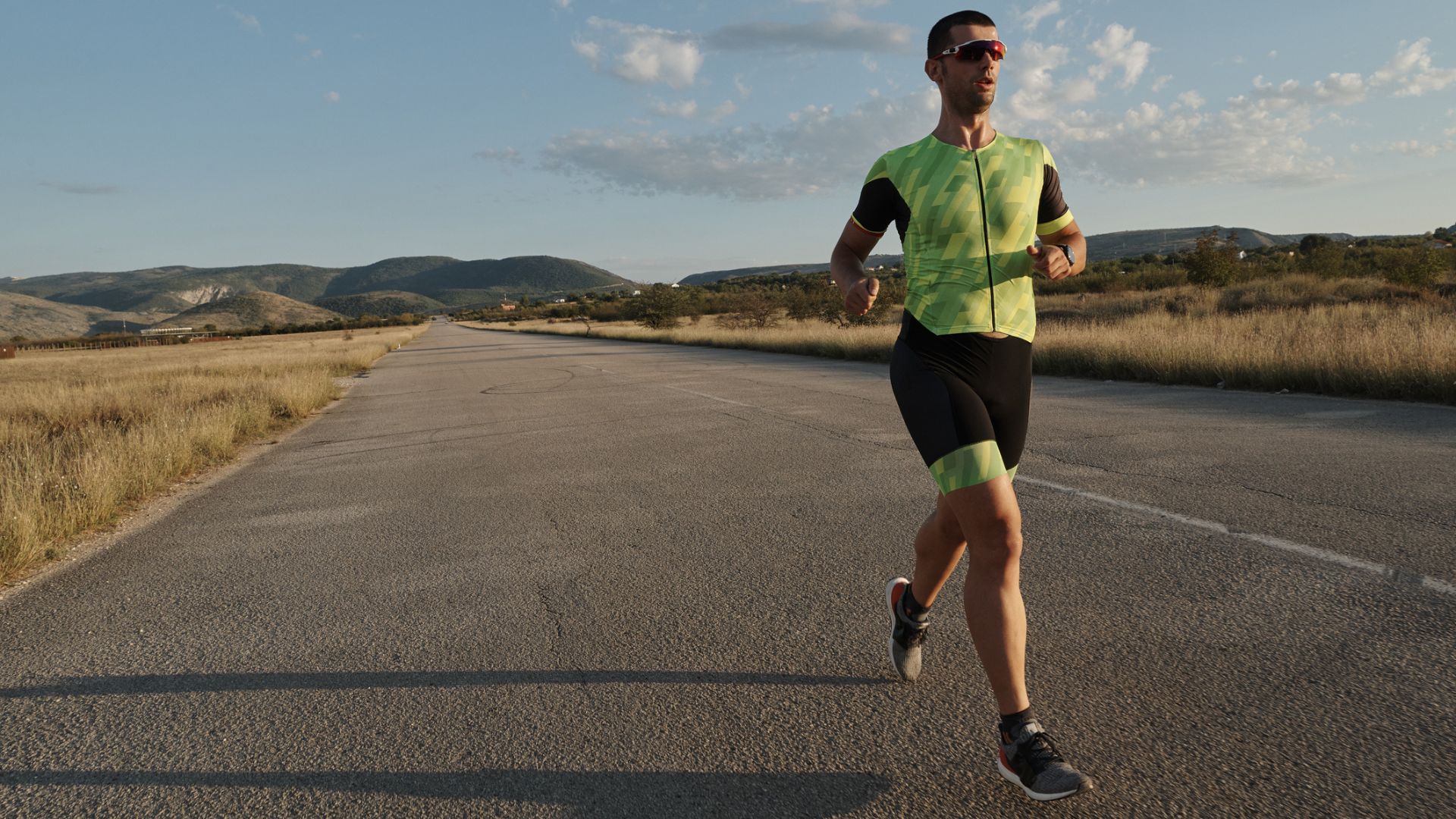
By the time you hit the run leg of a triathlon, you’ve already put your body through a lot, especially if it’s a half Ironman or Ironman. At this point you want a shoe that’s built for running fast so you can hammer your way home, but it also needs to be cushioned and comfortable to help your jelly legs recover as you kick on.
Fortunately, those properties are not hard to find with racers these days, because the best carbon plate running shoes almost all fit the bill. The best triathlon shoes are very similar to the best running shoes for racing, which is why all the pro triathletes are using them at any distance.
There is one caveat to this, which is that triathlon shoes need to be easy to pull on in a hurry during transition. Some super-shoes are better than others for this, though you can swap the laces for pull toggles to make any shoe a little easier to slip on.
Another thing to consider is that slower runners might want a softer and more stable shoe for the final leg of longer triathlons like Ironman events, when a stiff carbon plate shoe might prove uncomfortable.
How I Tested These Shoes
You can trust Coach
I am not a triathlete, but I am a very keen runner with a 2hr 28min marathon PB to my name, and I’ve been able to test almost all the best carbon plate running shoes on the market. I’ve picked out the fastest options below for racing at any distance, plus a couple of more supportive and comfortable options.
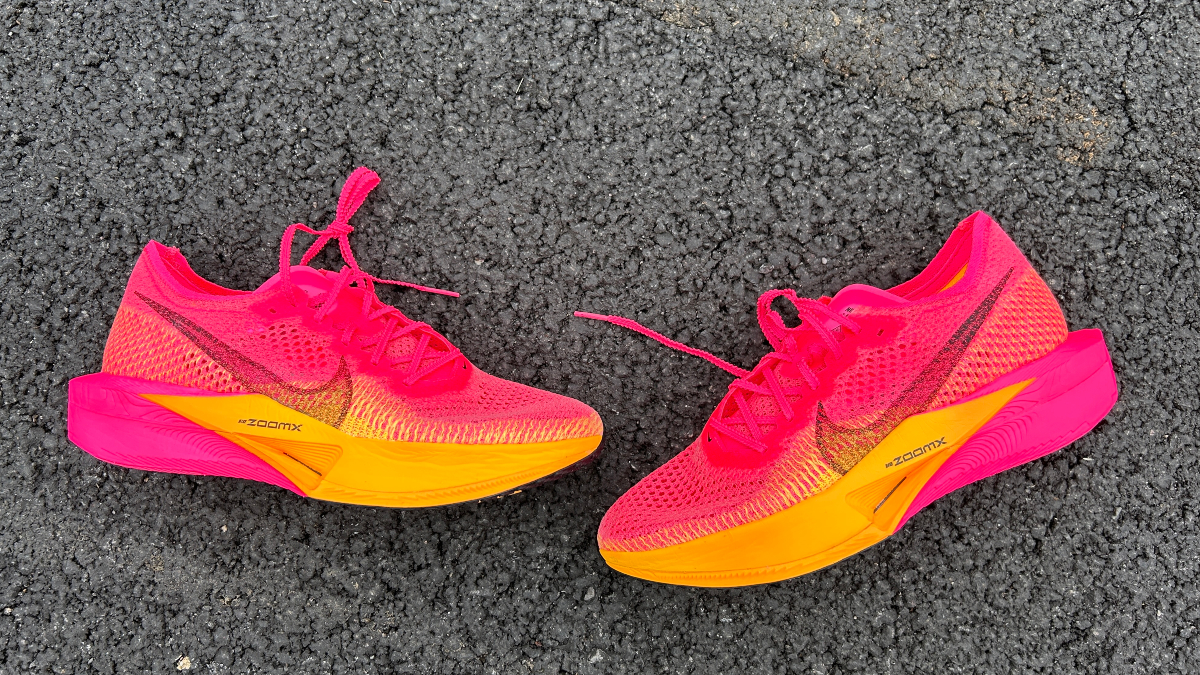
Nike Vaporfly 3
Specifications
Reasons to buy
Reasons to avoid
The Nike Vaporfly remains the easy pick for runners looking to race over any distance. It’s lighter than most carbon shoes while still being comfortable enough for the marathon distance, and the ZoomX foam in the midsole is very springy, especially in combination with the carbon plate.
Unlike the Alphafly 2, the Vaporfly is pretty easy to pull on in a hurry, though the Asics and Hoka shoes below are faster options on that front. The main downside to the Vaporfly 3 is that the outsole is not very durable at the back, so it’s one to keep for race day.
Read more in our Nike Vaporfly 3 review
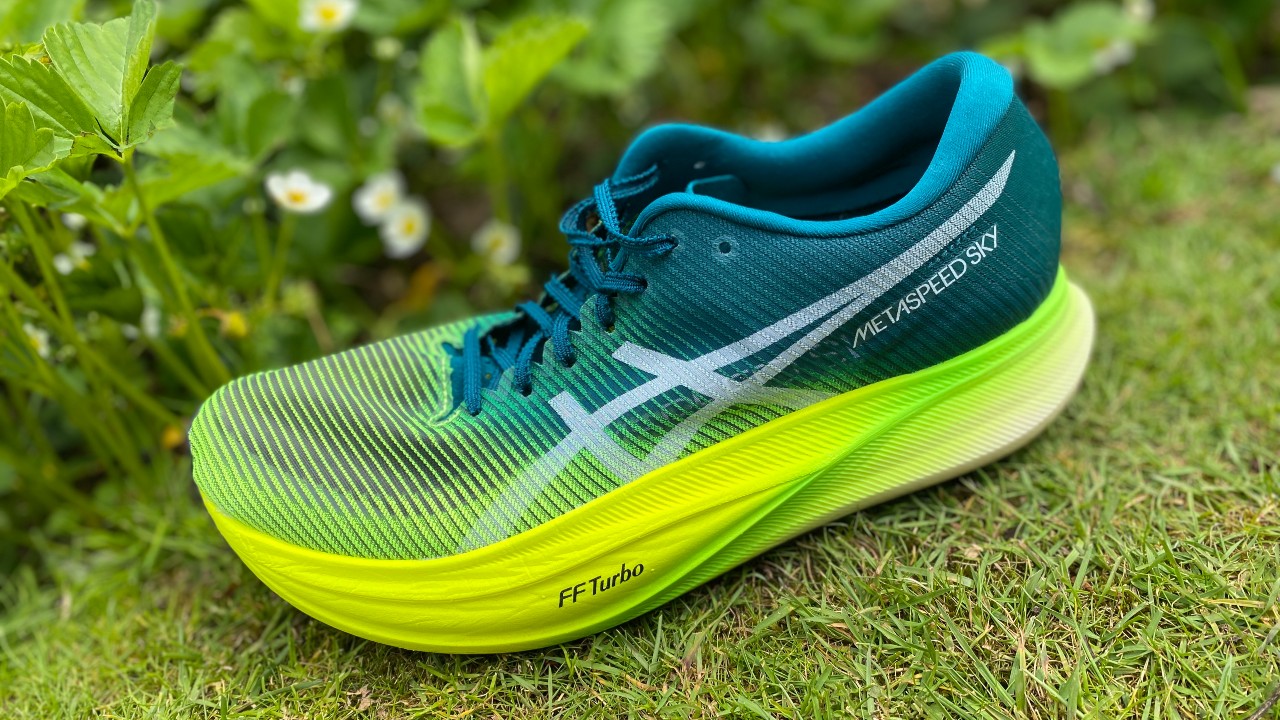
Asics Metaspeed Sky+
Specifications
Reasons to buy
Reasons to avoid
Another light and speedy carbon option, the Metaspeed Sky+ is specifically designed by Asics for runners with bounding strides, but I’ve found it a great racer even as someone who has a shuffling gait and I think any runner will enjoy the bouncy ride of the shoe.
The Metaspeed Sky+ is a little more stable than the Vaporfly and easier to put on quickly, but suffers from the same problem in having an outsole design that shows wear quickly. On performance alone it’s a great pick for triathlons of any distance, since it’s light enough for short sprint events and cushioned enough for marathons.
Read more in our Asics Metaspeed Sky+ review
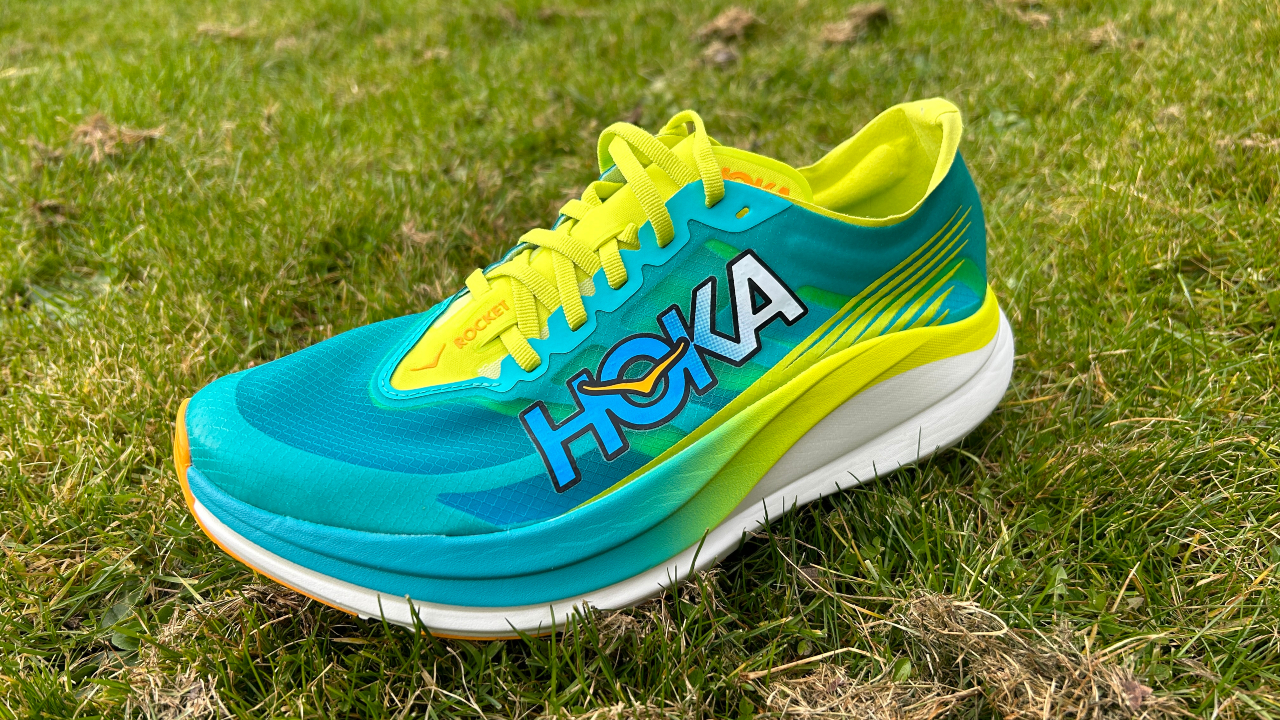
Hoka Rocket X2
Specifications
Reasons to buy
Reasons to avoid
Hoka has been a major player in the long-distance triathlon scene for years, but until the launch of the Rocket X2 in 2023 it did not have a carbon super-shoe that could rival the best on the market. The Rocket X2 is light, bouncy and propulsive, and also a little more stable than most super-shoes which helps with cornering at speed on tired legs.
The very soft heel design on the upper also makes it easier to pull the Rocket X2 on quickly, but the downside is that design did lead to me getting heel rub on longer runs with the Rocket X2. Heel-locking the shoe reduces the risk of this and I’ve had no problems in shorter races with the shoe, but it’s something to consider if you’re lining up an Ironman event.
Read more in our Hoka Rocket X2 review
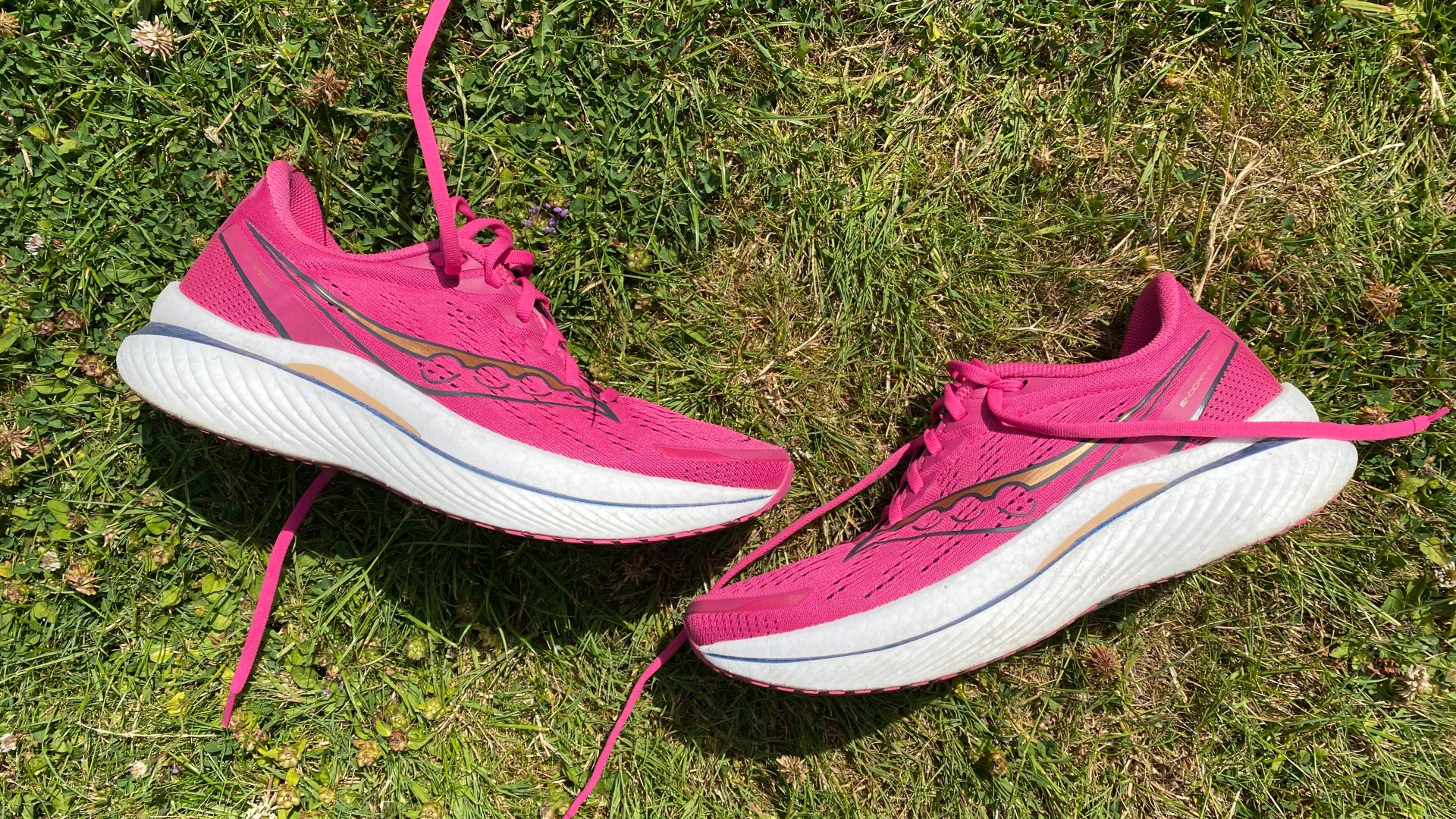
Saucony Endorphin Speed 3
Specifications
Reasons to buy
Reasons to avoid
The Endorphin Speed 3 is a plated training shoe, but the plate in its midsole is made out of TPU plastic rather than carbon, which means it’s more flexible and comfortable than a full carbon shoe. You lose a little of the pop of a carbon shoe, but it’s still very fast and kinder on the legs. It’s also a more stable shoe than most carbon options, with a wider base and wings on the plate to help keep your foot centered.
I have loved the Endorphin Speed line since the original and it’s a shoe you can use for pretty much any kind of run, from long easy plods to all-out 5Ks, so it will serve you well no matter what state you’re in during the running leg of your triathlon. The PWRRUN PB midsole is bouncy without being squishy, and Saucony’s Speedroll rocker helps keep you rolling even as your legs begin to tire.
Read more in our Saucony Endorphin Speed 3 review
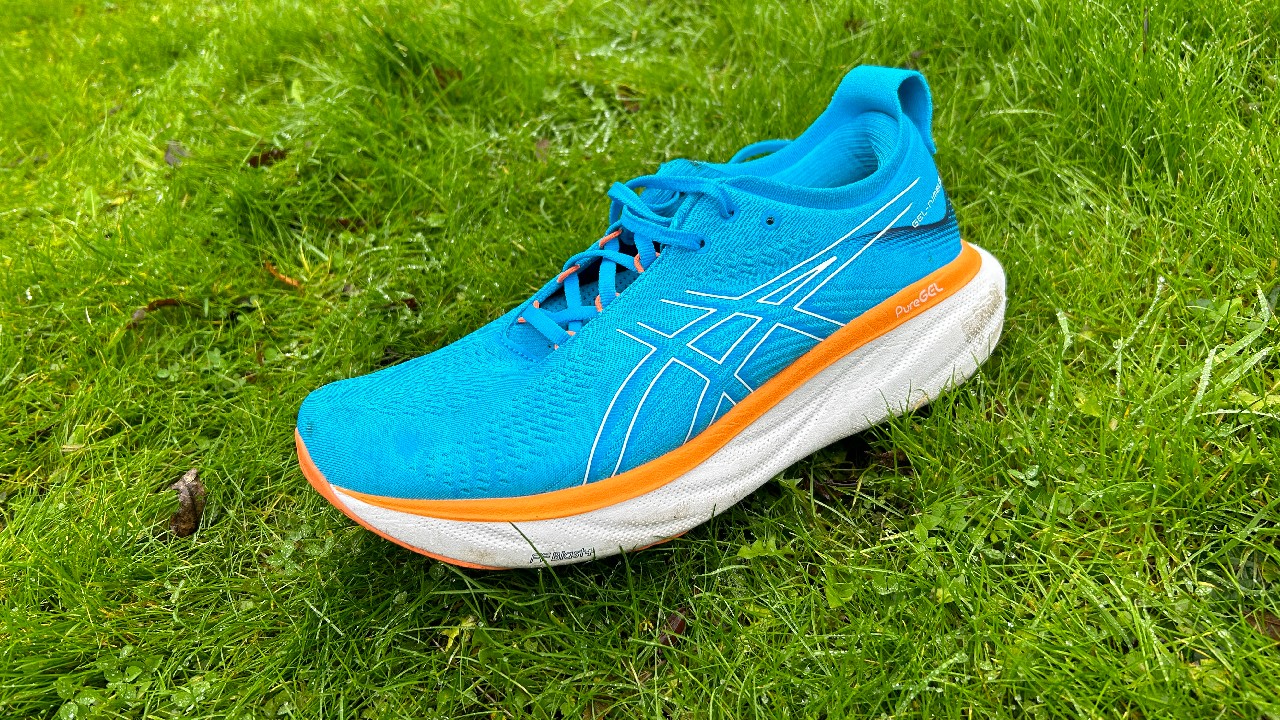
Asics Gel-Nimbus 25
Specifications
Reasons to buy
Reasons to avoid
If you’re just looking to complete your event and want a running shoe that’s comfortable for the final leg of your triathlon, the Asics Gel-Nimbus 25 should be on your list. The high stack of comfortable FF Blast+ foam protects the legs without feeling too hefty, and the shoe has a smooth ride that will help you tick off the miles to the finish line.
It’s not a fast shoe compared with the plated options above, but if you do have a finishing kick in you the Gel-Nimbus 25 won’t feel completely leaden either. It is worth noting that because the shoe’s stack height is 41.5mm at the heel it technically breaches the 40mm limit for competition, but that’s a rule aimed at elites who might want to use super-shoes like the Adidas Prime X, which has a 49.5mm stack and multiple plates in its midsole. No-one is going to disqualify an amateur for pulling on a comfy cushioned shoe like the Asics Gel-Nimbus 25.
Read more in our Asics Gel-Nimbus 25 review
Get the Coach Newsletter
Sign up for workout ideas, training advice, reviews of the latest gear and more.

Nick Harris-Fry is a journalist who has been covering health and fitness since 2015. Nick is an avid runner, covering 70-110km a week, which gives him ample opportunity to test a wide range of running shoes and running gear. He is also the chief tester for fitness trackers and running watches, treadmills and exercise bikes, and workout headphones.
